Nesten alt derfra ligger sørover.
When I left Oslo on February 16, the sun set at about 4:30 in the afternoon. When I arrived in Longyearbyen on February 21, around 2:30 pm, the sun had already set—four months earlier. And it did not rise above the mountainsides that cradle the world’s northernmost permanent settlement during my three-and-a-half-day stay there. The sun has, however, broken the horizon in the farthest north, although for the islanders it remains another fifteen days behind those stark, treeless escarpments—escarpments clawed by ancient waters, both frozen and flowing, with no roots, barely a shoot here and there, no wood to hold down the dirt, no branch, nor leaf nor needle, to disrupt the snows. The resulting (perfect) half-light at this special time of year reveals an embarrassment of blues. Manifold blues. And all is rock. Under snow. The light here has a trillion lives. I wrote in the end of my last post of blåtida, “the blue time”; now I have stood inside that magic. In two weeks, the sun will rise over Longyearbyen, and a mere five weeks from that day, it will stay up all night.
This is the knot of the world. And the North is another West.
I headed to Svalbard as part of a long-anticipated trip, first to Tromsø, toward the northern end of fastlandet, the mainland of the Scandinavian peninsula, and then to Longyearbyen. The latter lies on the island of Spitsbergen, in the Svalbard archipelago, administered as a Norwegian territory since the Svalbard Treaty of 1920. With just over two thousand residents, Longyearbyen is the northernmost permanent human settlement in the world. And with a view from 78°13’N, almost everything lies to the south. I did not want to come south again.
Tromsø, too, has its own magic. I had long hoped to travel here, having heard much of its special place among the world’s towns from a college friend, Rachel, who lived there for seven years. Tromsø lies just shy of 70°N, not a north to shake a stick at (unless it’s a ski pole). The town is mainly on an island, Tromsøya. There are many “northernmosts” in Tromsø: the world’s northernmost research university, the world’s northernmost mosque, the world’s northernmost ski resort, the world’s northernmost botanical garden, among other northernmost things. For a good while now, Mack Brewery in Tromsø has claimed, on its labeling and all, that it is Verdens nordligste bryggeri (“the world’s northernmost brewery”)—more on that in a moment. But Tromsø certainly has the largest selection of beers on tap above the Arctic Circle at Ølhallen. Over fifty taps, many limited editions from Mack. As an enthusiast, I was in a little Arctic Beer Heaven. I was also lucky to get a little tour of the Universitet i Tromsø, thanks to Serina, fellow Fulbrighter and St. Olaf graduate who’s stationed in a lab there studying methane-metabolizing bacteria that could help mitigate the influence of climate-changing gases. I snuck over on Saturday and splurged for a half-day of alpine skiing at the world’s northernmost ski area, Tromsø Alpinpark. Biting wind up there, and mediocre forhold after a recent thaw, but well worth the arktisk utsikt (see below). Tromsø was also the scene of my first real Northern Lights experience. Serina lent me a pair of langrenn (cross-country) skis as well, so I was able to spend an evening on the trails. During my tur, in the midst of a string of overcast days, the skies opened, the waxing moon rose to the east, and around 6:30 pm, in the Arctic dark of February, a ribbon of Aurora stretched the whole length of the firmament. Alone, in the quiet, on skis, below the moon, and the surreality of the most distinct, shimmering nordlys I’ve beheld: there are few finer things to hope for.
One has to wonder what the old people made of it all. A crystalline green banner sweeping over all things—and that without the low hum of industry or the chemical glow of city lights. What to do with such phenomena, pushing on the edges of their philosophy?
But Svalbard.
There is something altogether different. Something altogether different shaping its history—something terribly old, terribly cold, and somehow warm. I added a few more “northernmosts” to the list there, of course: I enjoyed food & drink at the world’s northernmost bar, visited the world’s northernmost museum, stayed in the world’s northernmost hotel, was treated in the world’s northernmost hospital2, taught in the world’s northernmost school, bought an issue of the world’s northernmost newspaper, saw (the entrance to) the world’s northernmost (and only) global seed vault, and, with apologies to Tromsø’s Mack, enjoyed beer from the world’s newly northernmost brewery (which I purchased at the world’s northernmost liquor store, cleverly called Nordpolet3). Svalbard has just last fall taken the northernmost-brewery banner with the removal of an eighty-five-year-old puritanical prohibition against alcohol production in Longyearbyen (it was, it’s said, to try and keep the coal miners sober-ish). After five years of persistence, Robert Johansen successfully petitioned for a change in the law and opened Svalbard Bryggeri. Quite a story, has he (in Norwegian, but a good read). I was fortunate to try a couple of the beers, made with purified water from Bogerbreen, the Boger Glacer, on Spitsbergen. It may well be in my head, but Svalbard Pilsner, in particular, had a awfully special glacial smak.
Walking through Longyearbyen gave rise to a remarkable current of sensations, many of them as intellectual as physical. Or, rather, in a place like that, the intellectual is physical. The brain, wrote Emily Dickinson, is wider than the sky. Not the mind, that abstract heaven of thoughts, but the brain, that electric, melon-sized, fatty mass sloshing around inside the skull. In Svalbard, walking along escarpments, into the fractal of valleys, through the loosely defined streets, immersed in endless configurations of blue and black and white, one can feel oneself thinking. And inevitably one thinks through the deeply human history that permeates the very nonhuman place. The remains of the old infrastructure of abandoned coal mines punctuate the stark landscape. Mostly the wooden towers of the old taubane, or suspended lines that carried coal in buckets from the mouths of mines up on the escarpment banks down to the processing facilities along the water. The harsh climate preserves the wood, it seems, though it is weathered. And those historic structures (which comprise a lot of the structures in the town) are also protected, one of my hosts at Longyearbyen Skole told me, by Norwegian law. It struck me, as I walked, observed, talked, and wondered, that the same forces that shaped the American West shaped the Farthest North. This is winter’s desert (and it is, in fact, a desert climate). The people who built these old things, who pushed themselves through wildly uncomfortable conditions only to reach the limits of the exploitable world, did so for the same reason as the Americans who drove west: wealth and dominance. I expected that Longyearbyen was largely a research town, something like a more inhabited version of Antarctica’s McMurdo Station. But what I found was the Old West of the North. Longyearbyen was built by coal miners. And like the gold-miners of the Klondike, not long before, the dogsled was prominent. I took a dogsled tour one evening, and I fell in love with eight huskies. (Into Bolterdalen we drove, south of Longyear, under the full moon, in the farthest north!) I’ll spare the words, and only say that I understood right quick how easily one can become powerfully avhengig av (addicted to) that mode of going. A new kind of longing. (Avhengig av means both “addicted to” and “dependent upon,” so it works nicely here.) And so the dogsled; the weathered wooden edifices of abandoned mines; the bizarre warmth of indoor spaces, ringed with the furs of every kind of harsh-weather beast, from seal to reindeer to polar bear; the golden glow of firelight; the slosh of winter ales; the prevalence of heavy boots; the pipes that run above ground, because the permafrost otherwise pushes them up (as it does buried corpses). The tales of the old adventurers—Barentz, Nansen, Nobile, Amundsen—that hang on the walls and the old photographs that accompany them. And yet, Longyearbyen is its own place. The wood one sees is a false presence: there are no trees on Svalbard. There are no trees at all. There is drivtømmer—driftwood—washing up from Siberia from time to time, but hardly enough to shape but a rude hovel. Svalbard offers nothing of itself for our kind. Nothing but coal. And now a kind of knowledge, or its promise. And, in case of Ragnarok, the Svalbard Global Seed Vault, which I’ve long and long been hoping to see, stands in wait on an escarpment above the (world’s northernmost major) airport. A scant few people in the world are authorized to go inside, and I’m obviously not one of them. So, along with some images, I gathered some sound of the exhaust fans at the entrance:
The fans come on and off, regulating the air deep inside that special hvelv. The Western push that helped build the industrial world also builds the promise against its self-destruction. Where to put that in one’s sky-wide brain?
My favorite passage of The Great Gatsby comes when Nick, towards the end of his tale about New York City, confesses, “I see now that this has been a story of the West, after all—[we] were all Westerners, and perhaps we possessed some deficiency in common which made us subtly unadaptable to Eastern life.” There is a drive implicit there to forsake the familiar, even if one fails, ultimately, to adapt to what one finds “out there.” But the irony is profound. Just as Nick (much less the North Dakota-born James Gatz) escaped the Midwest to find some sense of the larger world, he worked in the heart of the capital of finance that made the Midwest possible, and, arguably, made it worth leaving. The same spirit is in Ishmael’s opening monologue in Moby-Dick (which I’ve referenced before in this blog; I can’t help it, and I encourage you to read on if you please):
Call me Ishmael. Some years ago—never mind how long precisely—having little or no money in my purse, and nothing particular to interest me on shore, I thought I would sail about a little and see the watery part of the world. It is a way I have of driving off the spleen and regulating the circulation. Whenever I find myself growing grim about the mouth; whenever it is a damp, drizzly November in my soul; whenever I find myself involuntarily pausing before coffin warehouses, and bringing up the rear of every funeral I meet; and especially whenever my hypos get such an upper hand of me, that it requires a strong moral principle to prevent me from deliberately stepping into the street, and methodically knocking people’s hats off—then, I account it high time to get to sea as soon as I can. This is my substitute for pistol and ball. With a philosophical flourish Cato throws himself upon his sword; I quietly take to the ship. There is nothing surprising in this. If they but knew it, almost all men in their degree, some time or other, cherish very nearly the same feelings towards the ocean with me.
Like Nick’s, Ishmael’s longing is to escape the depressive, bone-soaking trappings, the too-much-ness, of the culture he knows too well. The ocean is as opposed to Ishmael’s land as the East is to Nick’s West. And like Nick’s, Ishmael’s longing drives him to participate in one of the very enterprises that makes that old culture go—in Ishmael’s case, it’s whaling, and the then-inexhaustible market for whale oil. (It’s still oil, today, that pushes us, but our whale is the earth itself.) So it was with the drivers of Svalbard. Whether it was the November in the souls of their various homeplaces that drove them to the farthest north, or other, more pedestrian forces (like, say, moneylust), I’m not sure. But Svalbard has a special place on the map of irony: the coal that gave it a human life is, of course, a significant factor in the changing climate, whose changes are uniquely perceptible in Svalbard. The far-northern latitudes feel the force of warming more fiercely, and faster, than the rest of the world sørover. Thus the late shift in the Longyearbyen’s heart from mining to research turns, in many ways, almost precisely upon this fulcrum of irony. The North is another West. The West is another North. And both, of course, are simply points on one of many circles.
However, the human history of Svalbard gives it something that the American West doesn’t share: when Europeans “explored” the Americas, there were, of course, people there, people that the Euro-American societies, insatiable for growth at whatever cost, either decimated or absorbed, and we live today in the giant wake of that catastrophic disturbance. Svalbard, on the other hand, had no inhabitants, save the bears. And the stocky-legged Svalbard reindeer. And the seals. But no people. Thus, the human presence on Svalbard has always been international, multi-cultural, and in some sense, cooperative. I felt some of this difference in the school. Longyearbyen Skole is a Norwegian school, to be sure. But it is both an international community (there are, for example, a surprising number of Thai families there) and a multi-Norwegian community. One of the dimensions of my travels around Norway I love best is listening to all the regional dialects. Students in a given school on the fastland largely speak the regional dialect of that area. But Longyearbyen’s Norwegian students come from all over Norway, and thus there is no Svalbard dialect: it is a mash, or a mosaic, of all of Norway. There’s something joyful in that. Another bonus is that, since there’s only one school in Longyearbyen (i.e., the ungdomskole, or lower-secondary, is not separate from the videregåendeskole, or upper-secondary school), so the Roving Scholar who visits Longyearbyen gets to teach at both levels. As a videregående teacher, it was an absolute thrill to work with younger students, ranging from 9-10-year-olds to the 16-year-olds I’m used to. Such curious, lively young people! Such wonder! They gave me as much of a workshop as I gave them. I’m really, really thankful for that opportunity.
And so, I find myself again in sørlandet. I tore myself from Spitsbergen (also: my plane was leaving, so, y’know, I had to go). But I did not want to leave. In the last hours of my stay, I had the chance to take a short tour into Adventdalen on a snøscooter, or snowmobile. Again, the irony, the fossil fuels burn and the island opens up to one’s imagination so much more quickly, so much less resistance. Such power is dangerous—I am no way impervious to its lures. I secretly loved it. In the farthest north, there are realities we can’t absorb. To borrow a phrase from A. R. Ammons, Svalbard is, for me, a collection of images for longing.
Enjoy the images.
1Unrelatedly, that’s the same year my great grandfather, Magnus Albert Hansen (later Myhrwold) moved from Lillehammer to Wisconsin.
2Leave it to Andy: on my first night in Longyearbyen, I discovered that the hotel has a sauna. I am a sucker for saunas. Especially when there is snow nearby. Remarkably, I had the place to myself. After a short sit in the outdoor hot tub, in the polar night, I got out, hopped down the few steps off the deck and into the snowy backyard of the hotel. I rolled around a spell in the snow, to get good and cold, so as to deepen the little joy of stepping into the sauna. I clamored over some rocks beneath the snow to reach the steps back up to the deck. I entered the sauna, splashed some water on the coals (surely it was glacial water in that wooden bucket), and sat down on the upper seat to begin my warming. Moments later I looked down to my feet. Blood. everywhere. Well, a good pool of it on the bench under my left foot, in any case. And a trail of it leading out into the main room and out towards the outside door. And it kept coming. I had cut the side of my foot good and deep, apparently on the snow-hidden stones in the yard, rolling around like a (happy) fool! Trying to stop the bleeding with paper towels, and without a phone, an unsuspecting Norwegian family poked their heads in to check out the scene. Imagine the sight: a hairy American in a Euro-style bathing suit, hopping around on one foot while blood drips from his other, and trails of blood now in the floor in so many directions. I sheepishly asked if they could alert the front desk of my sudden plight. Which they did. For some reason, they didn’t come back to enjoy the facilities. I’m not sure why . . .
The front desk attendant fetched the first-aid kit, and cleaned up the scene while I cleaned up the wound. She called the legevakt, the emergency nurse, on duty that Sunday night at Longyearbyen Sykehus. She could have called the doctor in to have it examined, emergency services which would have cost between 300 and 400 NOK (about $35-45). To save money, and since I had stopped the major bleeding, I decided to wait until the next day to see the doctor. Monday, then, I did so. He thoroughly disinfected and cleaned the cut and elected to use tape, rather than stitches, while we discussed the American election (he and the nurse were both, surprise!, appalled at what’s happening in the US). All finished, and I paid 142 NOK (about $17) for a doctor’s visit to fix up a reasonably significant gash, and this at the edge of the inhabited world, without being a part of the Norwegian healthcare system. Seventeen dollars. Imagine what such a visit would cost in the US. And without insurance. It’s embarrassing, frankly, to think about how we got so backwards.
3Nordpolet, for my English-speaking readers, is a fun play on words: the state-owned liquor stores in Norway are collectively called Vinmonopolet, literally (and hilariously, to the American ear) “the wine monopoly.” Nordpolet is thus “the North-opoly,” but the play is also on nordpolen, which means, of course, “the North Pole.” With the -et ending, rather than -en, polet is shorthand for vinmonopolet. So there you go. (I know, I just explained a joke in way too much detail, and thereby killed it.)
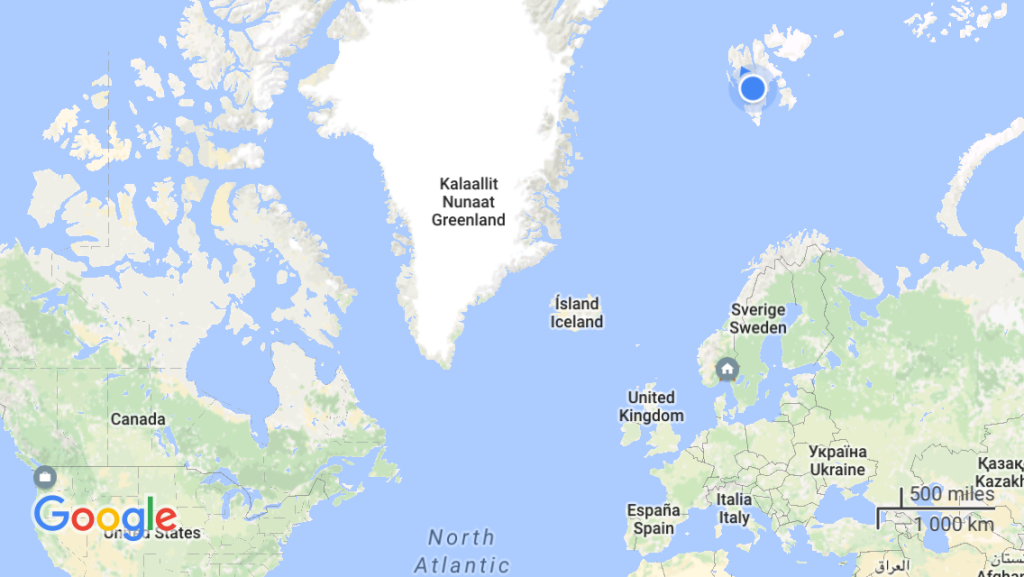
Where I was.
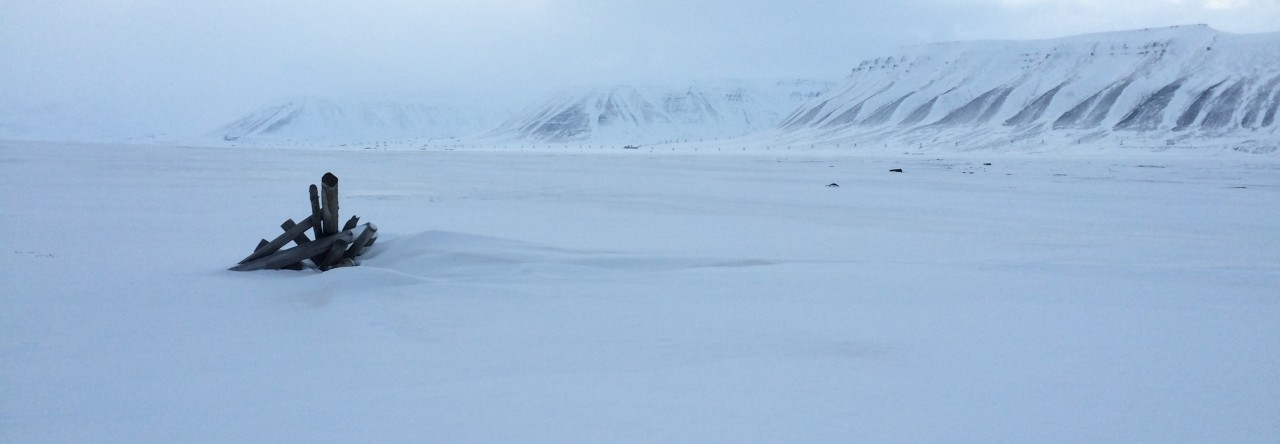
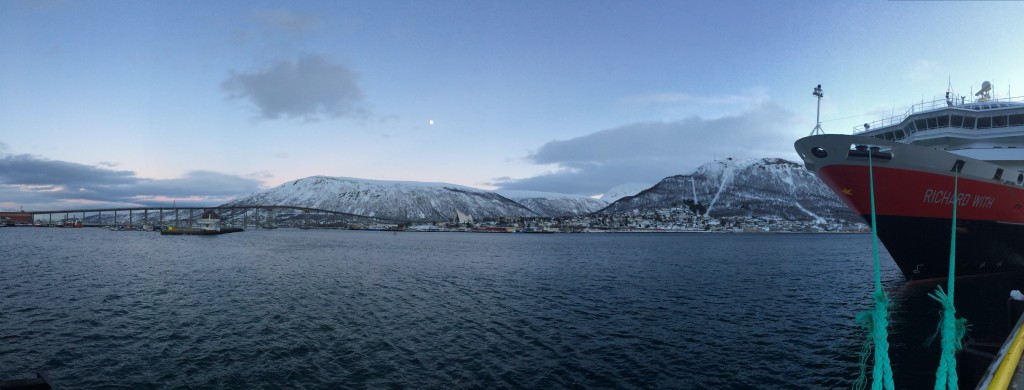



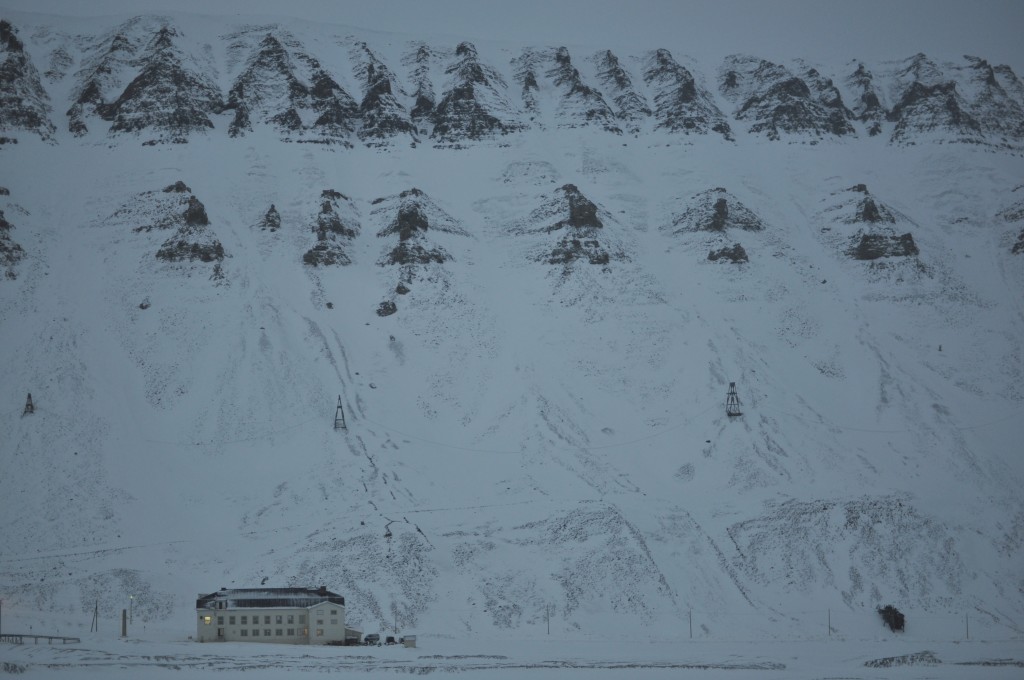
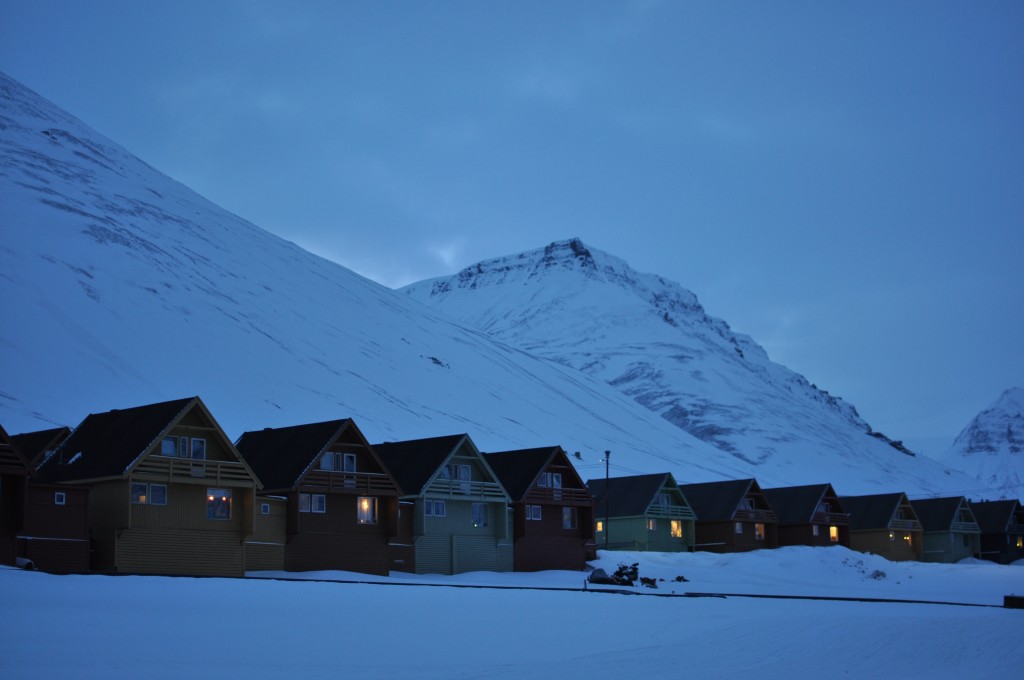
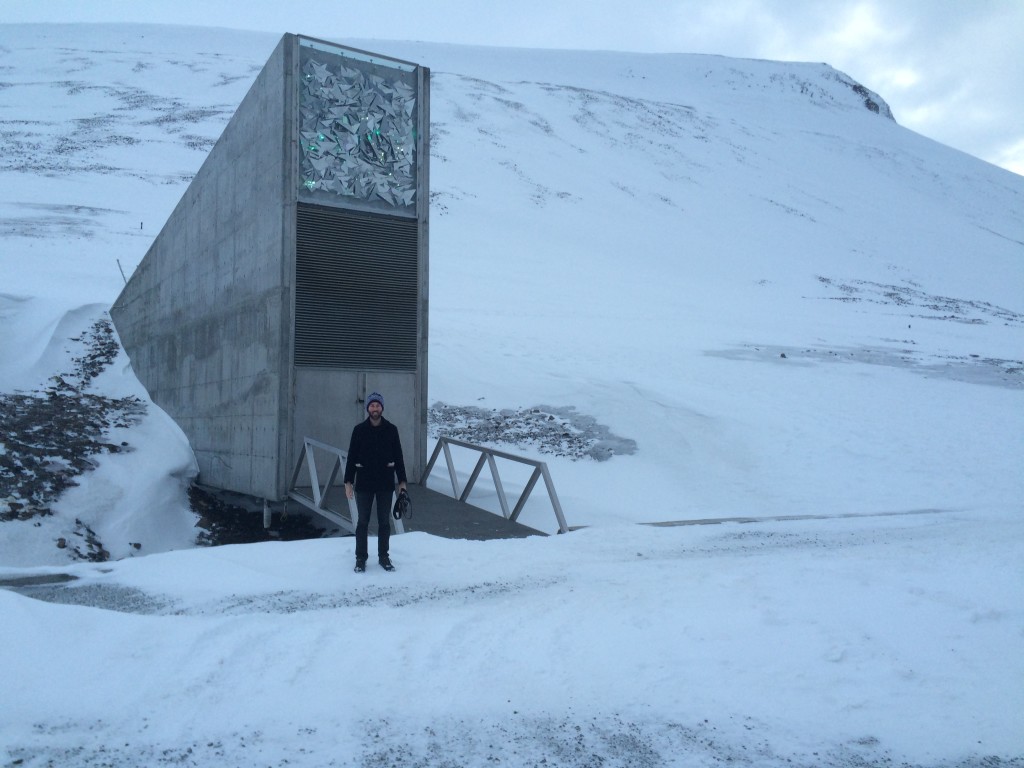
Adina Meyer
Whoa, that was an awesome blog. I think it was my favorite one. I loved the connections you made between North and West, and also the ironies you point out. The Northern Lights? Don’t you think the old people just said it was some sort of Divine thing? Which of course I think it is.
Freda & Grandma Myhrwold
Oh my, Andrew J, what amazing experiences you are racking up! Thank you for taking us along with you in your writing! Grandma says the way you write creates the pictures in our minds as much as the photos you post. We sure are enjoying your blog. (Though sometimes we have to read your posts multiple times to grasp it all!) ? We love you!
Kevin M
” northernmost permanent settlement”
That is a trippy 3 words right there. Cool stuff.